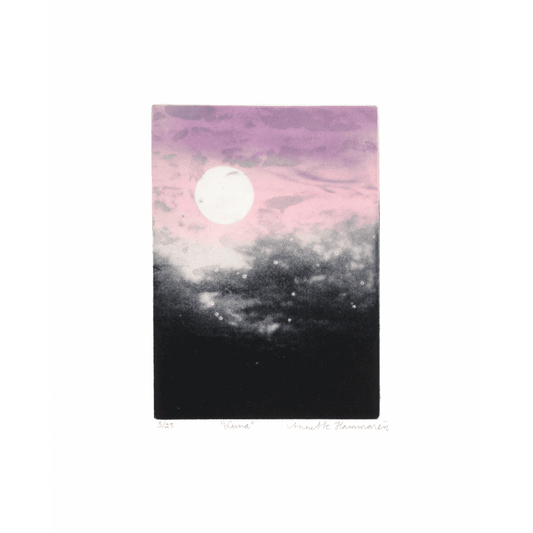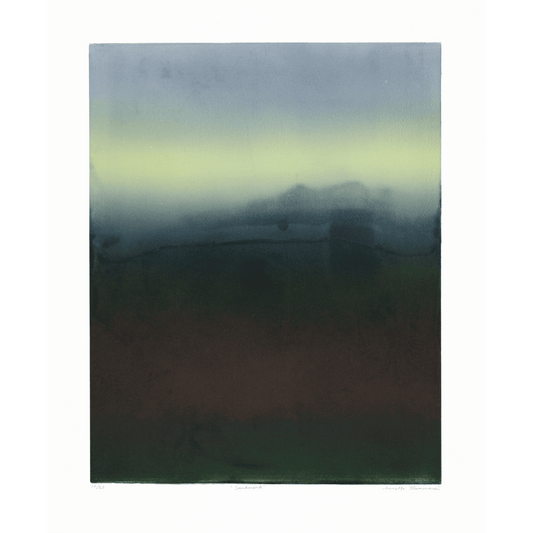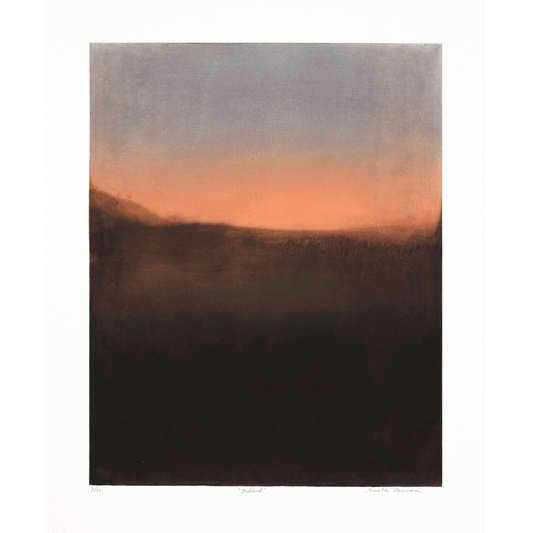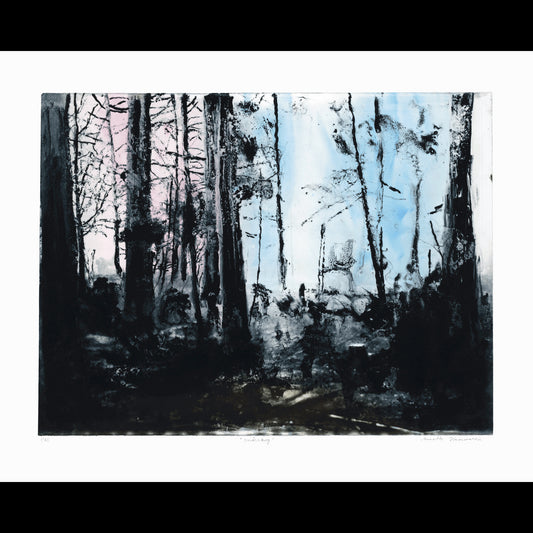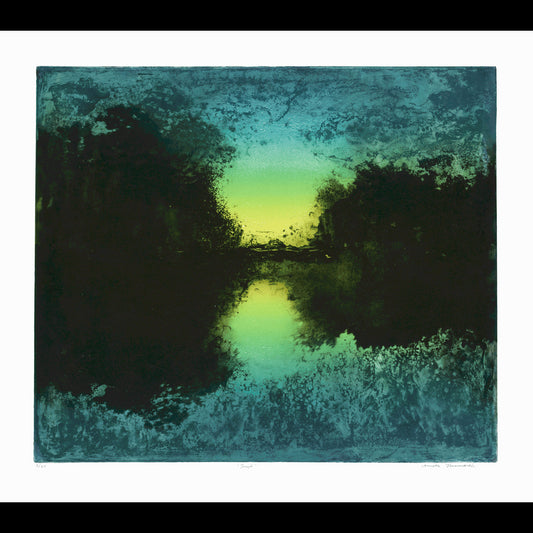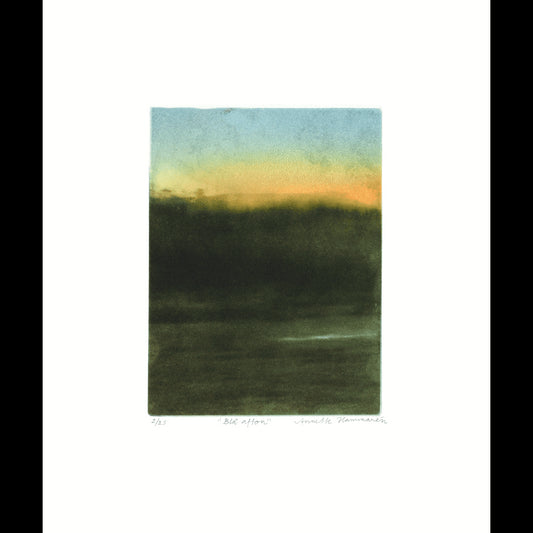One of ed. art's most appreciated artists is Annette Hammarén, whose evocative images with motifs taken from nature strike a special note in the Swedish folk soul. Annette Hammarén works with classic printmaking, in editions where each print is made by hand on cotton paper. The artist herself does the printing work, and in Annette Hammarén's case this work is an important part of the artistic process. We were able to accompany Annette for a day in the printing workshop, to learn how a work of art is created.
The result of our visit was a small video that you can see below, and if you scroll past the video, you will find image and text documentation of the entire process.
graphics, in editions where each sheet is printed by hand on cotton paper. The artist herself does the printing work, and in Annette Hammarén's case this work is an important part of the artistic process. We were able to accompany Annette for a day in the printing workshop, to learn how a work of art is created.
The result of our visit was a small video that you can see below, and if you scroll past the video, you will find image and text documentation of the entire process.
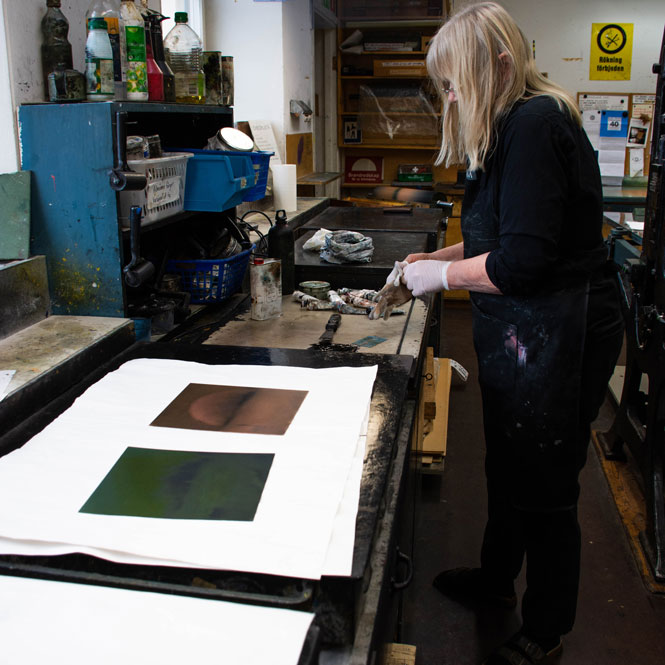
Today Annette will be proof-printing an image that consists of two plates. She has previously prepared the plates (we will tell you more about them another time). She has a copper plate that she has etched a motif into and a so-called photopolymer plate that she has transferred a photograph to.
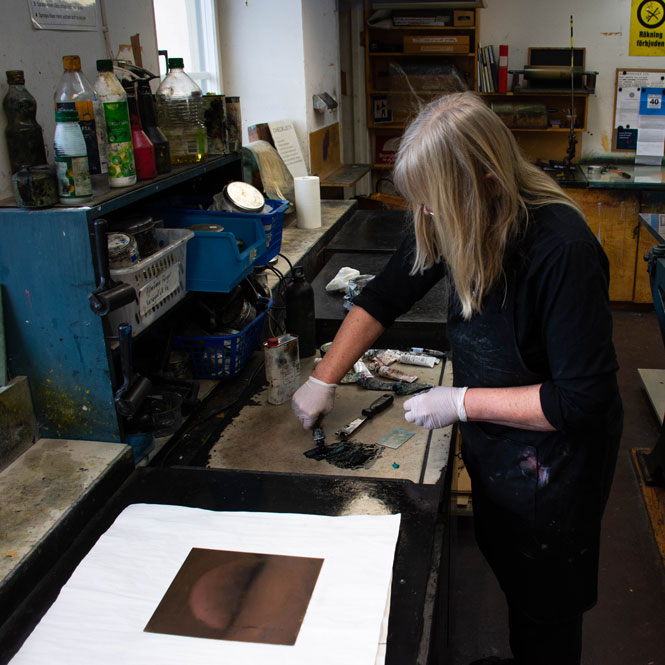
First, Annette prepares the printing ink itself - mixing colors to get the right tone and consistency.
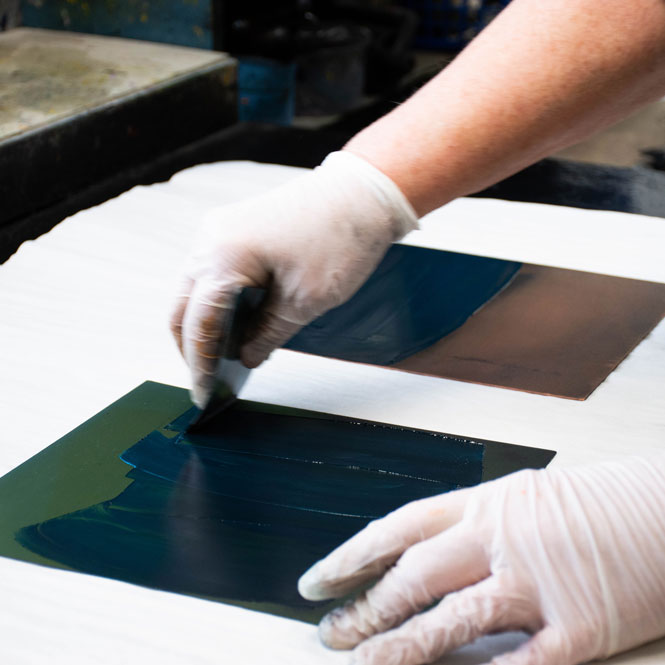
Then she applies the paint thinly to the plates with a plastic spatula.
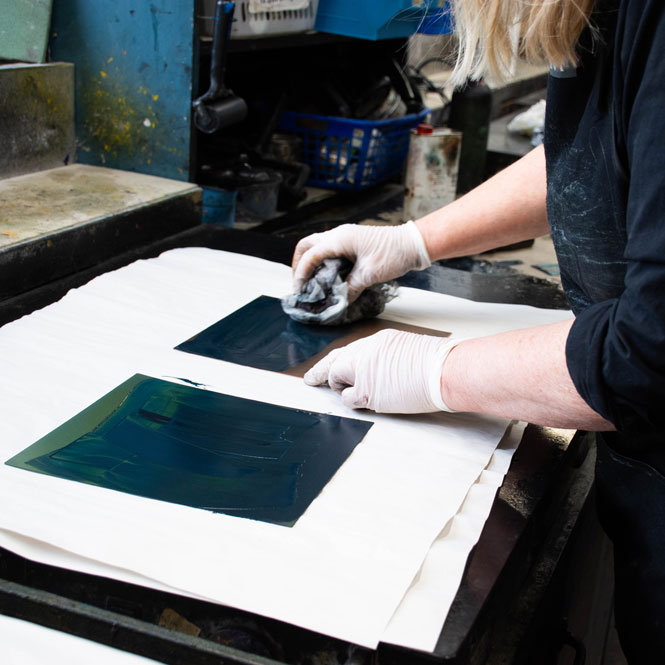
Now all excess paint should be wiped away. The paint should only adhere to the depressions in the plates.
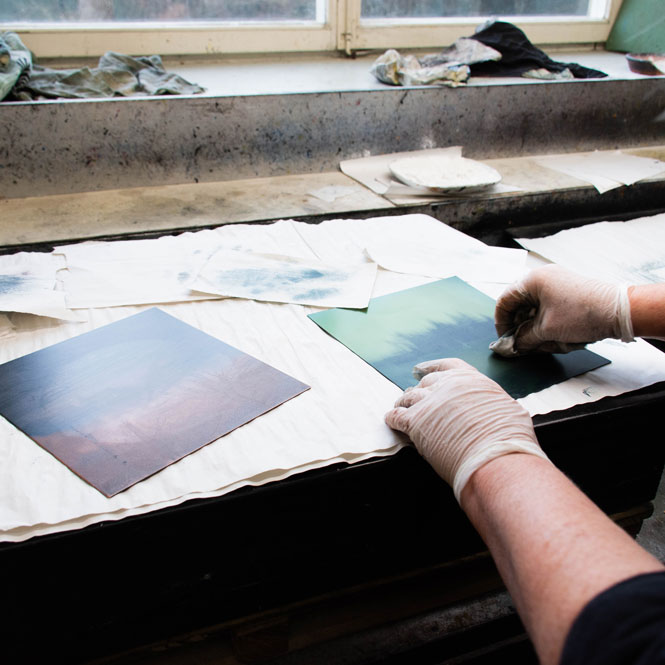
Annette wants to include as many colors as possible on as few plates as possible. Therefore, she will add an orange-black gradient to one of the plates.
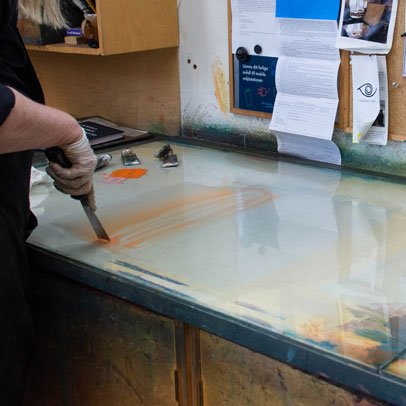
She spreads the colors on a glass plate...
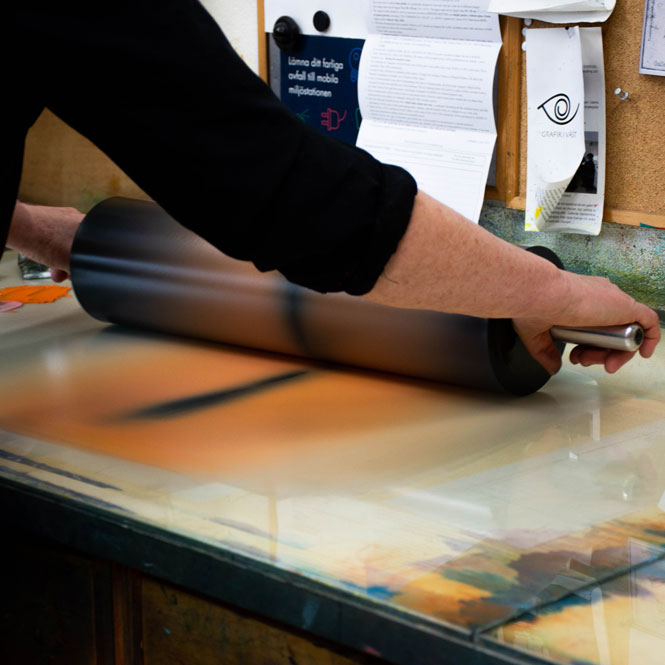
...and rolls them out so that the transitions are smooth. Then she rolls the roller once over the sheet.
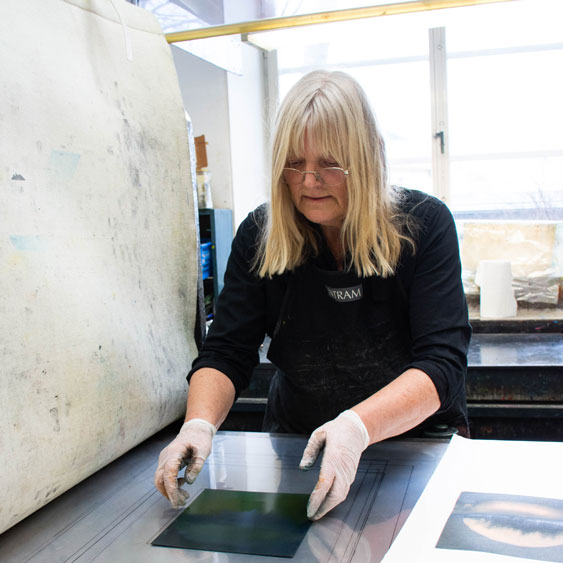
Now everything is ready to print. On the printing table, Annette has marked out her most common formats so that she can easily fit the plates in the right place. That's where she places plate number 1.
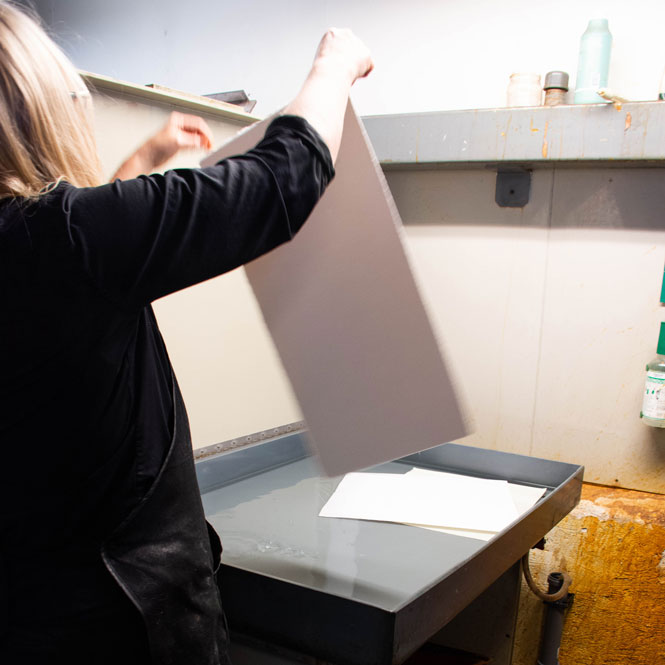
The paper is made of cotton, which means it is completely acid-free and can be soaked. In order for it to absorb the ink, it must be moistened. Annette has soaked the paper. Now she picks it up...
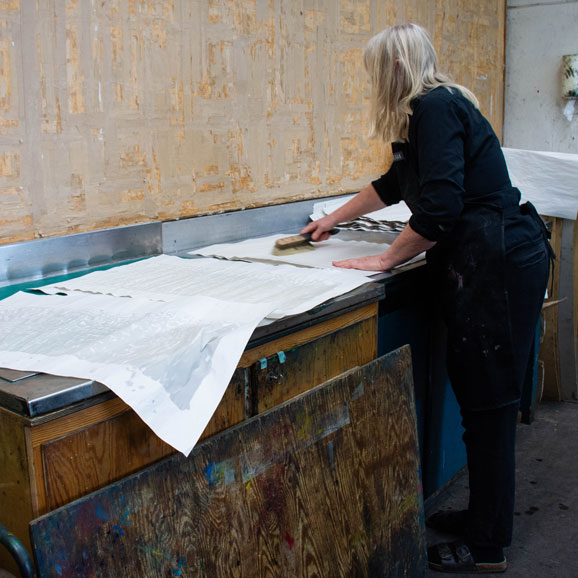
...and dries it by placing it between two pieces of waste paper and brushing off the water.
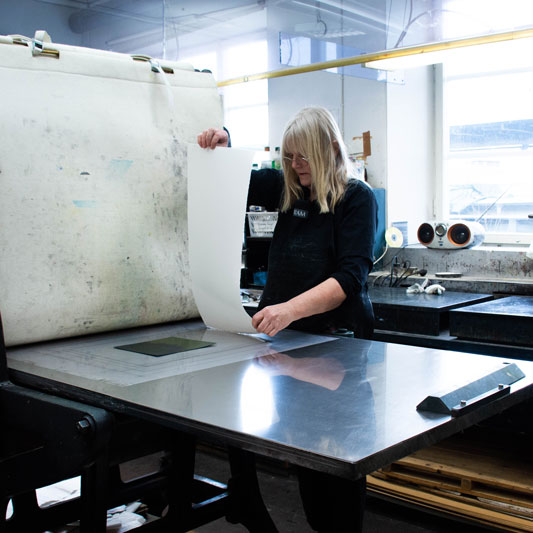
The paper is then placed on top of the printing plate. It is important that it is straight!
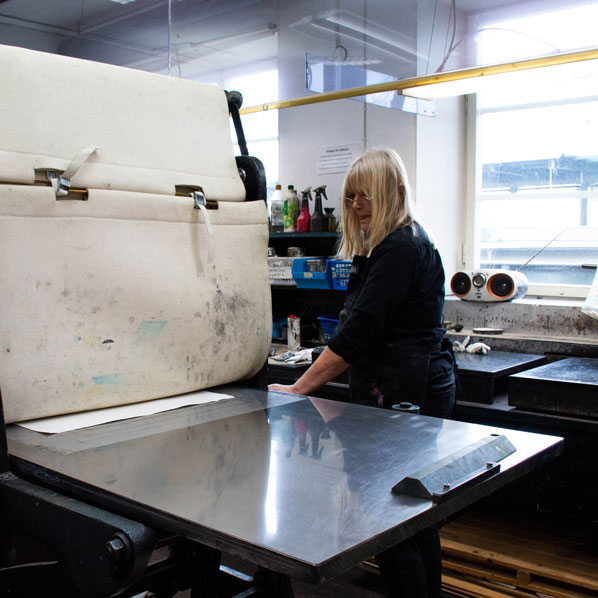
Now the paper and plate are run through the printing press, which presses them together with several tons of pressure. The color then transfers from the plate to the paper.
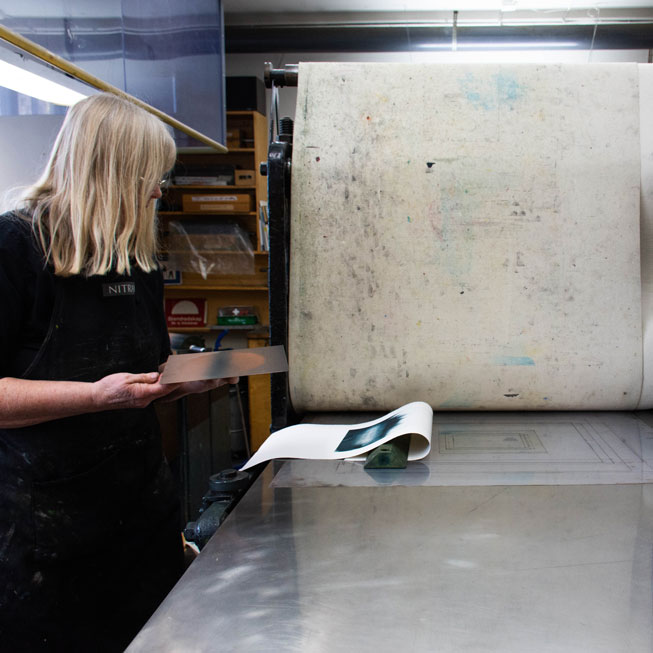
Now the next plate is to be printed. It has to end up in exactly the same place as plate number one. That's why Annette has put a weight on the printing paper so that it doesn't move when she lifts it to remove the first plate.
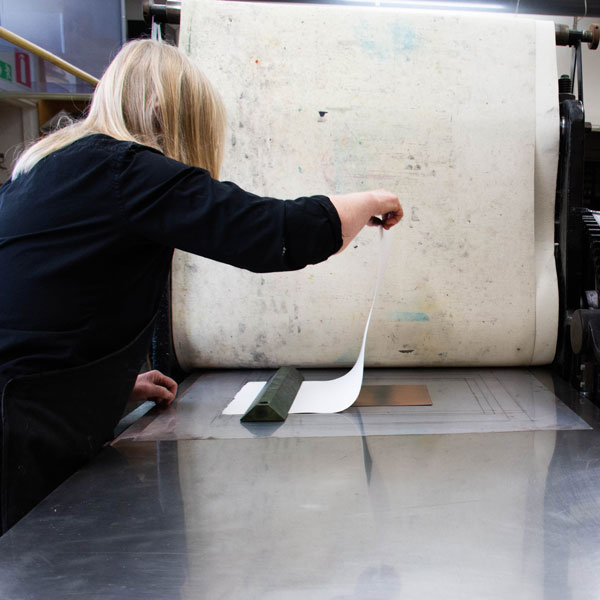
Place plate number two, fold the paper down and then back through the press again.
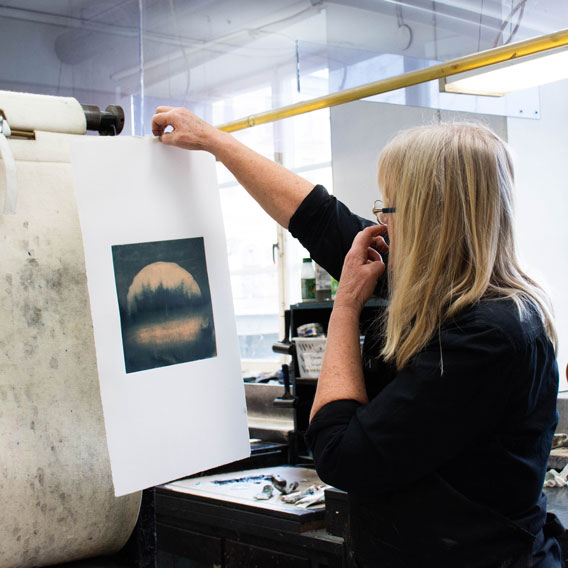
Now the picture is ready to be examined by the artist's critical eyes.
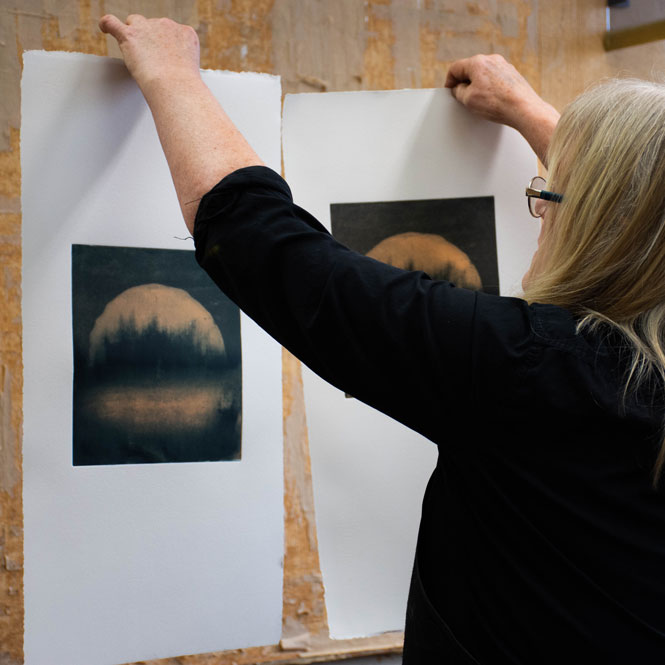
And compared to other proofs
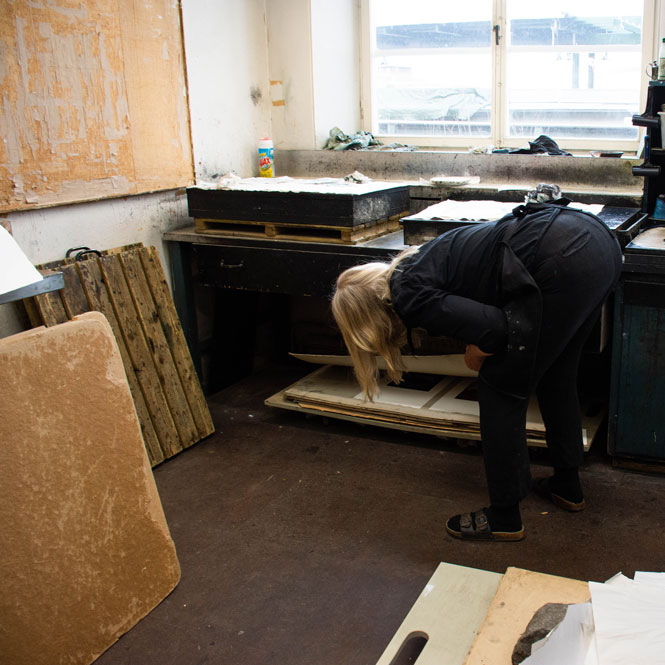
Then the leaves are left to lie flat under pressure to dry.
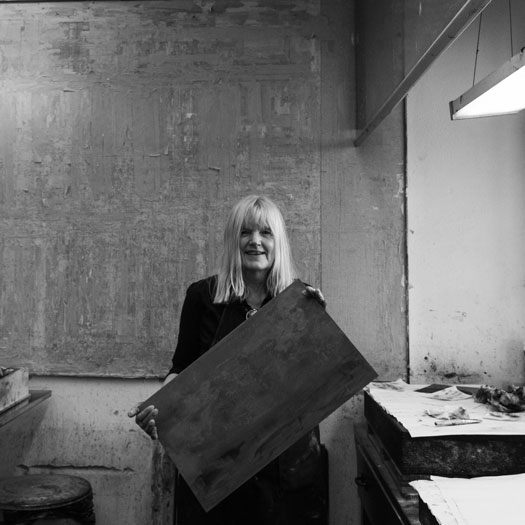
Time to turn over a new leaf!
Read more about etchings and other printing techniques here .


